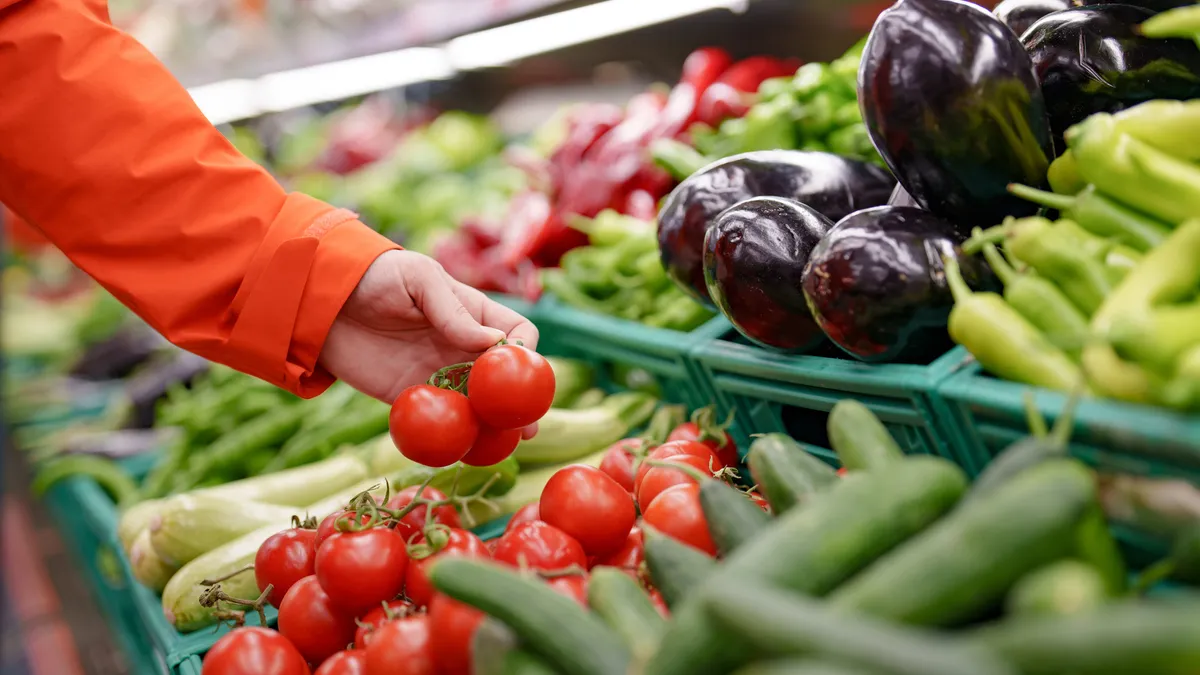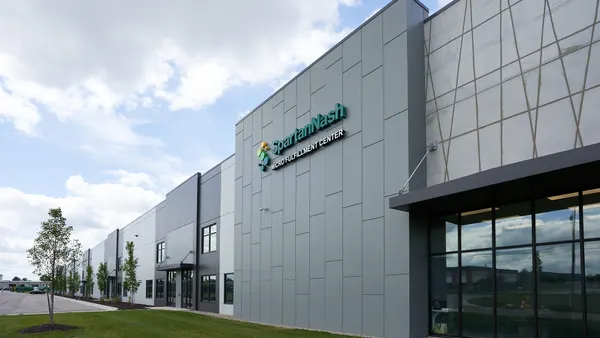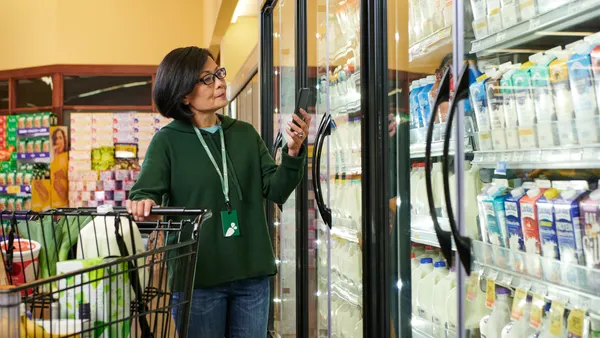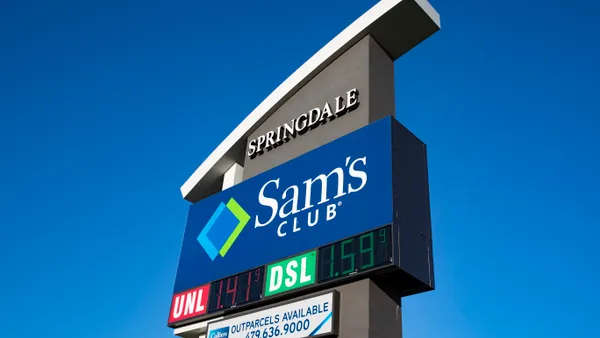A transformation of the United States’ food safety system is underway. Behind the scenes, work is feverishly taking place across the nation’s retailers and suppliers in hopes of lowering the rate of people (48 million) in the U.S. the CDC estimates get sick each year from foodborne illness.
These companies are currently implementing plans to comply with the FDA’s Requirements for Additional Traceability Records for Certain Foods, also known as the Food Traceability Final Rule or Section 204 of the FDA Food Safety Modernization Act (FSMA) – shorthand FSMA 204. The deadline to comply is January 20, 2026, but routine inspections are anticipated to start in 2027, “to give covered entities additional time to work together and ensure that traceability information is being maintained and shared within supply chains per the requirements of the rule,” the FDA says.
The traceability rule will allow for faster identification and rapid removal of potentially contaminated food from the market by establishing additional recordkeeping requirements. The FDA has designated impacted foods to the Food Traceability List (FTL) – and all entities that manufacture, process, pack or hold foods on the FTL must simultaneously meet recordkeeping requirements by the deadline.
The FDA states the FMSA is “transforming the nation’s food safety system by shifting the focus from responding to foodborne illness to preventing it.” While complying with FSMA 204 has its challenges, some grocers are viewing it in a positive light.
“We really see FSMA 204 as the beginning of the future of grocery,” says Michelle Leger, Sr. Manager Quality Assurance of LUNDS & BYERLYS, an 85-year-old grocer with retail stores, two food production facilities that primarily create its private label food products, and a produce distribution center.
“It could be seen as the next evolutionary step for retail grocers to keep up with the modern, digital world,” she says.
As Sally Robinson, VP Strategic Initiatives for Upshop, explains, one side of FSMA 204 is traceability recall and knowing where products went. The other side is the data component, capturing and exchanging all the data elements for high-risk foods.
“Retailers are receiving products, they're shipping products, and — in some cases — they’re transforming products in a central environment (such as in the deli or with private label products),” says Robinson. “They will have to capture traceability lot code (TLC) and other key data elements (KDEs) across each of the identified high-risk foods. Barcodes have evolved and industries have worked to have lot codes encoded.
“The capture of this data within the critical tracking events is newer and there are key areas to think about. We couldn't necessarily say, ‘well, we took lot codes of leafy greens and we made it into a salad, or sandwich,’ or ‘we shipped it to the supplier, and they took those greens and transformed them into a new lot coded product.’
“So, it's all of the events where high-risk products move throughout the supply chain and in some cases are transforming into something else. And the key nuance is, when you transform it into something else, then it gets a new traceability lot code. And that also needs to be tracked.”
It's the exchange of those key data elements throughout the supply chain that is bringing forth the future of grocery and food traceability.
“So, this idea of tracking lot codes, that we don't do through the supply chain now, will enable us to use this as a launching pad for what else we can utilize this data for,” explains Leger. “If we're tracking the lot code, we can also track the expiration date of the lot, which can give us more control of inventory at store level, allowing us to rotate product and maintain inventory levels more efficiently. In a more practical sense, if we can see exactly how much of a specific lot code we have in store and when it expires, we could put the item on sale before it times out. This can help reduce food waste and make sure that we get fresher product faster.”
Matt Hilbrink, Vice President of Enterprise Risk & Asset Protection for The Raley's Companies, notes it’s an opportunity for the grocer to build upon what it already has in place. The Raley’s Companies, founded in 1935, includes more than 235 locations across seven states under nine banners: Raley’s, Bel Air, Nob Hill Foods, Raley’s O-N-E Market, Bashas’, Bashas’ Diné, Food City, AJ’s Fine Foods and Eddie’s Country Store.
“There'll be more to come,” he notes. “I don't think this is the end of this traceability discussion around food. I anticipate there will be many more things in the future that could come from this in terms of being required to understand where and when you sourced items from suppliers, and where it traveled through your supply chain, leading ultimately to where it ended up for retail sale. So that's an opportunity for us to enhance safety in the future.”
“I think there's a future roadmap play here in terms of, once they get their arms around the MVP of what FSMA 204 requires, there's a lot of crossover into the food safety landscape that is really important and allows you to continually leverage what [the FDA] is trying to get to with some of this legislation,” adds Robinson.
The Challenges of FMSA 204
Enhancing food safety comes with plenty of challenges for the companies that need to comply with FMSA 204.
“In the beginning, understanding the rule was the biggest challenge,” shares Leger. “There are exceptions to rules and then there are exceptions to the exceptions. It is its own puzzle, and it was difficult for us to even know how much time and resources to dedicate to the project when we didn't understand the rules. So that was a big lift of almost six months of just hitting the ground with research.
“The part we struggled with the most was we couldn't phone a friend or follow another company's lead because this is new territory for all. The fear of the unknown gave it more of a presence than it probably would've had otherwise. But now that we've broached what it is and how it works, that fear of the unknown goes away and it becomes more approachable.”
Hilbrink notes, “It's amazing what goes into a project of this scope.”
The Raley's Companies currently does not have the infrastructure in its systems to track by Lot number. “None of our distribution systems were designed this way,” he explains. “So, they are going under fundamental re-architecture and design in order to do this. We have a backbone that'll support it, but we're going to have to adapt our finance systems along with internal warehouse and merchandising and ordering distribution systems. These weren't components of the software packages that we have that were enabled or even built out in the past.”
He further explains that the grocer’s store distribution systems aren't necessarily directly tied to its procurement and its retail sales systems or retail merchandising systems.
“They're aligned, they do talk to each other, but they're not fully integrated. It's not a fully integrated suite. So, if I have to capture a Lot number, I'm going to have to capture it from an inbound shipping EDI feed from a supplier who may have had to capture that upstream from the broker and from the grower. So those handoffs have to take place. The handoff of those data must occur to us upon receipt in our distribution centers. Within our distribution systems, that handoff has to take place on our slotting and our picking modules.
“For example, if all the cucumbers go into one section of the refrigerator warehouse from multiple deliveries, we need to capture individual lot numbers as they are picked. Those Lot numbers in turn must be captured and handed over to the distribution and allocation system that's going to determine which store those are going to. Once they arrive at a specific store, that location is going to have to capture those Lot numbers upon receipt and be ready to provide reporting when needed.
“Right now, we do that with the actual SKU all the way through, but we don't do that with a Lot number associated with the individual SKU’s. So, it's incredibly complex in terms of handing off and/or carrying through the specific Lot number through those various systems as they travel through our supply chain to retail.”
The FMSA 204 Journey
Pulling back the curtain on the work going on behind the scenes at The Raley's Companies and LUNDS & BYERLYS showcases that retailers and suppliers have a lot to learn from each other in the journey to hit the 2026 deadline.
“If suppliers are not already pretty far along this journey, they should already be identifying the products that are high risk and thinking about how they're going to exchange that data with their partners, and how they capture that data within their four walls and share it with others,” cautions Robinson. “Same for retailers.”
“There are branching elements that happen within the supply chain, and all these companies are having to capture all that data and exchange it when that product moves throughout the supply chain,” she further notes. “And the retailer is here wanting to solve the problem, but they're dependent on the readiness of all these companies to exchange the data.”
Leger agrees, noting that the next steps for LUNDS & BYERLYS are data collection from its category teams and buyers so that the grocer can reach out to suppliers.
“This will be a very big supplier partnership initiative and we want to work with them on this project. We're asking them, ‘where are you at in your FSMA 204 journey?’ and ‘do you have an idea if you're going to use external software,’ and ‘how do you plan to give us the data?’ This will help us select a Traceability vendor that can help make this work for all our suppliers. Understanding the small manufacturer or harvester exemptions will be important for us too as we reach out as the next step of our process.”
At The Raley's Companies, merchants and those that manage the vendor supplier relationships and source the company’s procurement teams are involved in the ongoing work. “They are trying to learn if our suppliers are ready, if our suppliers have even heard of FSMA 204,” says Hilbrink.
When asked what his company’s biggest challenges in complying with FMSA 204 is, he said aside from the IT complexity and integration, the biggest challenge is understanding the impact upon local growers.
“We pride ourselves in being able to source locally and not just buy from the major suppliers. We want to be able to source local to the communities we serve. Let's say you're a local farmer and just large enough to not fall under a small producer exemption. How are you going to determine Lot code? How are you going to manage harvest standards, reporting, and data transfer/storage? How are you going to comply with this? What level of effort will be required to accommodate a diverse mix of smaller suppliers for our Stores?”
With so much still in question around FSMA 204, retailer and suppliers would benefit from sharing their learnings along this journey with each other. As Robinson notes, “I don't think there's anything that crosses across all these areas like this. That's what makes this unique.
“It's multifaceted in terms of supplier and retailer readiness. Every company in the supply chain is dependent on those before them doing what they need to do before meeting the regulation. So, because retailers are a later step, all those other companies have to do everything they need to do by January 2026 in order for the retailers to be ready — that cuts that timeline shorter. So, I think that the overall dependency lead can't just move and solve this in a vacuum.”
Written by Jamie Grill-Goodman | LinkedIn










